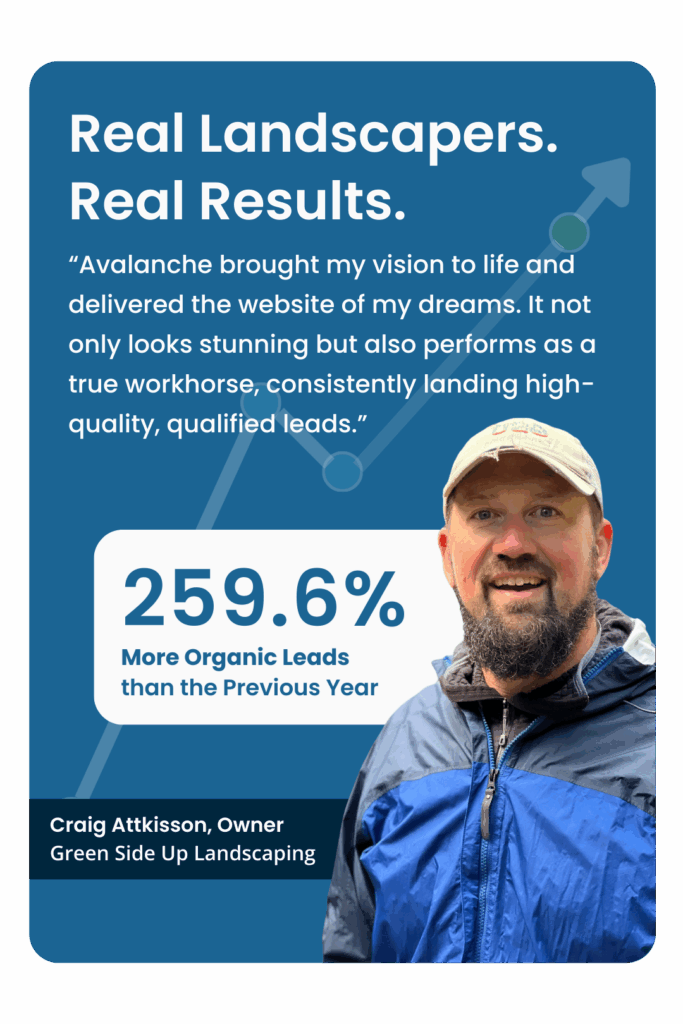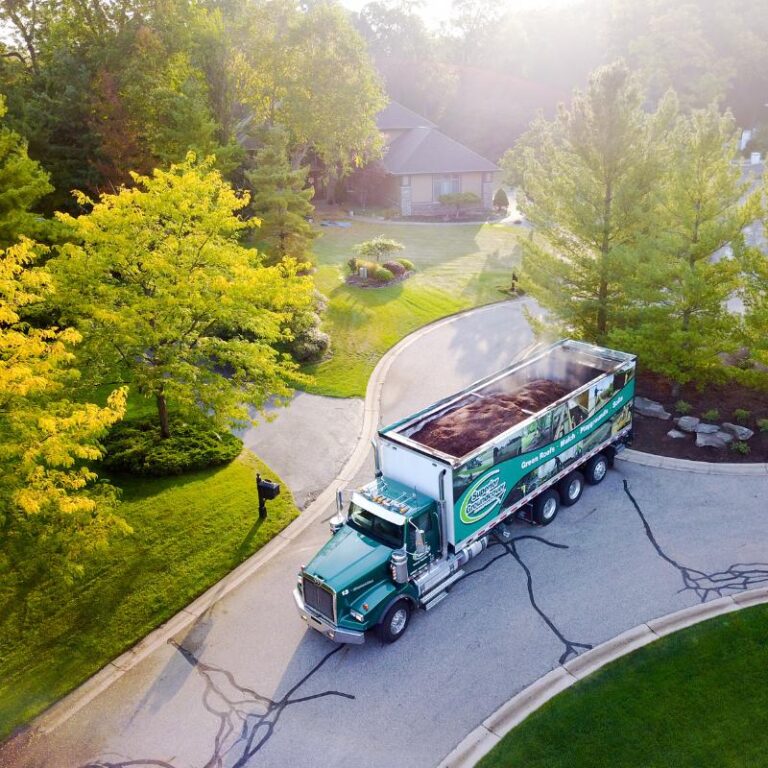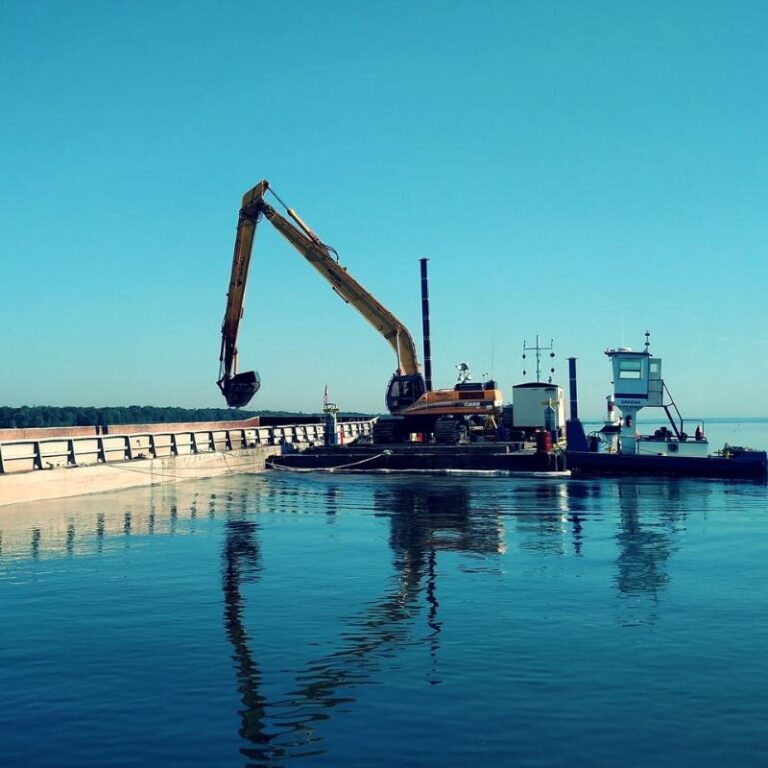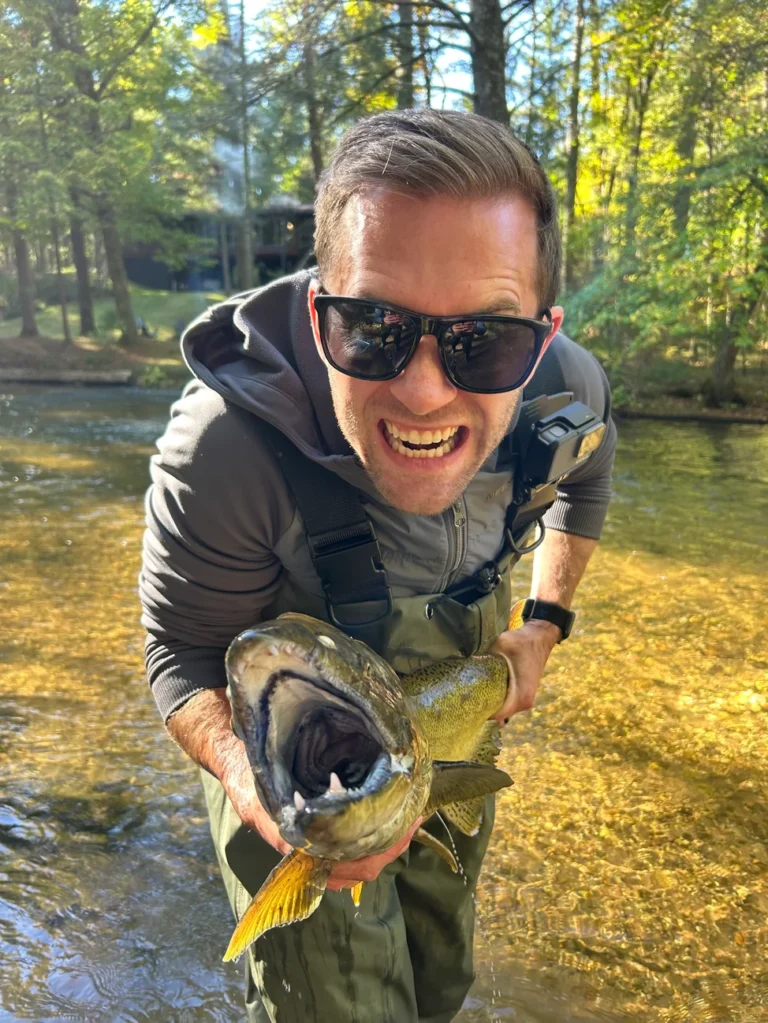SEO Marketing Services
Go from Rankings to Revenue with a Relentless Team
Real Results From Businesses Like Yours
We know what gets results for home services providers.
Take this landscaping client of ours. They wanted to turn their incredible local reputation into search engine results. So we built a custom strategy and got them:
What could your business achieve with 260% more leads?
Trusted by 200+ Home Service Companies
Who We Help & Why It Works
Our clients come to us because they’re tired of:
- An inconsistent stream of new leads
- Wasting money on PPC with no long-term return
- Being outranked by competitors who aren’t even that good!
- “SEO agencies” that sell lists of keywords but don’t put in the legwork to get results
- Wondering if there’s a better way to get more leads
If any of that sounds familiar, then you’re in the right place. Because when that ideal customer searches “best landscaper near me,” you need to be there.
Take Your Website to the Next Level
Your website is your business’s front door. That’s why it’s so important that your website is a place of relevance and trust. Searchers and Google both want to know whether your site fits the search and that you’re the best expert for the job. We go beyond the standard that humans and Google have to turn web traffic into actual transactions.
A Process That Works
Curious about what goes into our process? Here's how every step works to drive your success.
Cookie-Cutter SEO
Won’t Cut It
Sure, we’re not the biggest agency. But we are the most obsessed with fit and follow-through. Here’s what makes us different:
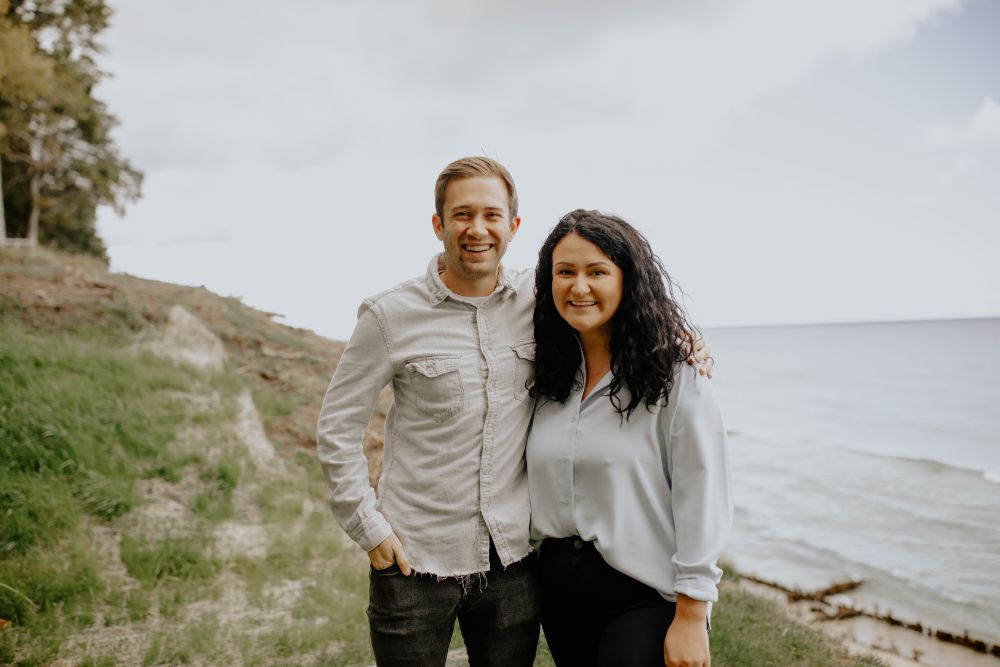
Talk to Lance and Keelie. See if you're a good fit for adding millions in revenue from SEO.
See Wins From Businesses Like Yours
Here's a taste of what we've helped our clients achieve:
Superior Groundcover
Over 5,000 Leads Generated!
Superior Groundcover
5,000 total leads generated. 4,000 being organic.
767 page 1 ranking keywords
White Lake Dock & Dredge
How We Helped Connect White Lake Dock & Dredge to New Customers in Search
White Lake Dock & Dredge
11.411 total organic traffic
Over $5 million in project value generated
TrapBag©
How TrapBag Became the Industry Leader in Disaster Prevention
TrapBag©
Monthly Organic Search Traffic (May 2025)
YOY Increase in Closed Deals from Organic Search
Jay Hidalgo
How We Helped Jay Hidalgo's Thought Leadership Reach the Right Searchers
Jay Hidalgo
32.1% organic conversion rate increase
73% total lead generation solely through organic growth
TextSpot
How We Helped TextSpot Increase Their Goal Completion by +360%
TextSpot
15,000 monthly organic visitors
500+ monthly trial activations
Preferred Homes
How We Helped Preferred Homes 10x Their Leads
Preferred Homes
219K total organic users in 2024.
1,641 total organic conversions in 2024
Center for Excellence in Preaching
A Truly Excellent Website Redesign for CEP
Center for Excellence in Preaching
97.99% increase in website user traffic from 2022-2023
1,164 organic leads generated from Jan. 2023 - Sept. 2023
Frontline Training Solutions
How We Helped These Business Leaders Lead the SERPs
Frontline Training Solutions
61.88% engagement from September 2022 to September 2023
3,354 total users from September 2022 to September 2023
RedWater Events
Raise a Glass to +45% Organic Conversions for RedWater Events!
RedWater Events
45.39% increase in organic conversions from July 2023 - Oct. 2023
3,000+ average search volume per month
Calvin Theological Seminary
How a New Website Nearly Doubled This University's Website Visitors
Calvin Theological Seminary
1,303.42% increase in total conversions
97.54% increase in website user traffic from 2022 - 2023
Fleis & Vandenbrink
How We Engineered the Right Strategy for F&V
Fleis & Vandenbrink
526K total impressions
1,099 goal completions since August 2021
Cancer and Hematology Centers
Helping the Helpers: How We Made It Easier for This Cancer Care Provider to Connect with New Patients
Cancer and Hematology Centers
740K total impressions
1,485 total conversions from June 1 - Oct 26 2023
Tamarack Industries
How We Helped Increase Organic Search by +25% in Just One Quarter
Tamarack Industries
1,135 organic user visits
1,085 new organic users from August 1 to October 31 2023
Oktober Can Seamers
"Can" You Believe It? +35% More Users in Just 3 Months
Oktober Can Seamers
6,500+ Total leads generated since April 2023
35.25% Total site user increase from Aug. 2023 to Nov. 2023
Butterball Farms, Inc
You Butter Believe These Results
Butterball Farms, Inc
500+ conversions in 2023 so far
12.47% organic search increase from 2022 to 2023
Jobson Roofing
Total Engagement Rate Soared 39%
Jobson Roofing
17% increase in organic traffic singe last year (July - Dec 2023)
39% increase in the total engagement rate
MíLá
How We Satisfied MíLá's Craving for More Dumpling Orders from Organic Search
MíLá
85.52% increase in organic traffic from 2023 - 2024
2.72 million total impressions from the past three months. (Jan - March)
North County Landscape Co.
How We Grew Traffic by 53% Without Spending Money on Ads
North County Landscape Co.
37% of Their Leads Come From Organic Search
308% More Organic Leads During Their Busy Season (Feb-June 2025) Than the Previous Year
Kiuwan
How We Helped This Software Solution Increase Leads & Sales
Kiuwan
802K total impressions since Jan. 2024
836 total Conversions since Jan. 2024
PreEmptive
How We Helped This Software Solution Generate 20,000+ Users a Month
PreEmptive
Million total impressions in the past six months
Total conversions in the past 30 days
Sparkle & Shine Cleaning Services
How We Helped Polish This Local Cleaning Company's Website
Sparkle & Shine Cleaning Services
59 total leads this year
6.9K total users this year
Priority Health
How We Took This Insurance Powerhouse to the Top of the SERPs
Priority Health
74.87% organic search traffic increase compared to the same period last year
144,966 total organic goal completions this year
HR Collaborative
How We Helped HR Collaborative Rank for 70% More Keywords
HR Collaborative
2,277 total new users in the past 30 days.
49,985 total impressions in 2024.
ADAS Depot
How We Quadrupled Organic Traffic for ADAS Depot in Less Than a Year
ADAS Depot
Increase in organic users from March 2024 to December 2024
Increase in Total Clicks Year-over-Year (February 2024 - February 2025)
How We Make the Magic Happen
Here’s what powers our SEO engine:
Frequently Asked Questions
Additional Resources
Dive deeper into content writing strategies and best practices.
🏔️ Hook, Line, and Sinker 🎣
Use this fishing framework to turn your posts into stories that capture attention, create tension, and inspire action from your audience.
🏔️ Stop Tuning the Race Car That Won’t Win a Race
Site speed won’t fix a weak message. Focus on clarity, trust, and real value first. Here’s how to build a website that actually works.
25+ Lawn and Landscape Marketing Examples (Updated Weekly)
See how real landscaping and lawn care companies use websites, SEO, ads, branding, and more to attract leads and grow their business.


